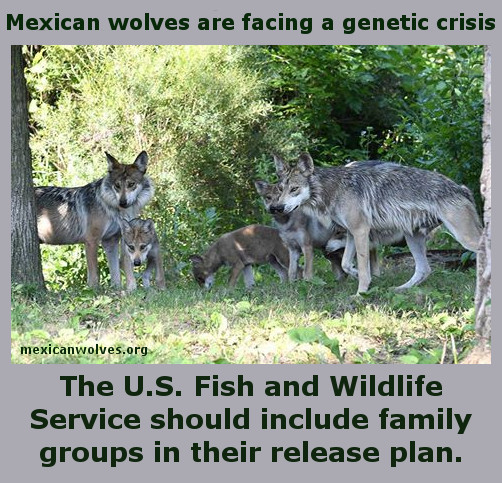In the News: Wolf Watch

Show your support for Mexican wolves with a Letter to the Editor today!
The letters to the editor page is one of the most widely read, influential parts of the newspaper. One letter from you can reach thousands of people and will also likely be read by decision-makers. Tips for writing your letter are below, but please write in your own words, from your own experience. Don’t try to include all the talking points in your letter.
Letter Writing Tips & Talking Points
- Cross fostering is one tool for improving the wild population’s genetic health, but it’s not enough. Many more wolves should be released this year from the hundreds in captive breeding programs. Rather than relying solely on cross-fostering, the Service should also release well-bonded pairs and families of wolves from captivity.
- Cross fostered pups will not contribute genetically to the wild population until they reach breeding age (2 years). The release of adults from the captive breeding program would result in a faster infusion of new genetics into the wild population.
- The U.S. Fish and Wildlife Service should include family groups in their release plan. Recovery won’t succeed unless they use all tools available to them, including the proven method of releasing bonded family groups that include adult wolves.
- The wild population of Mexican wolves is at tremendous risk due to its small size and genetics. There are hundreds of wolves in the captive breeding program whose genes are not represented in the wild population.
- If captive pups were to be released with their parents, that would immediately put more genetically diverse, breeding wolves into the wild, instead of having to wait for the pups to reach breeding age and mate, which would take two or more years.
- Wolves account for less than 0.2% of all cattle losses. At last count, there were 131 wolves in the wild across Arizona and New Mexico. According to the US Dept. of Agriculture, there are 2.5 million cattle in Arizona and New Mexico.
- Far too many endangered Mexican gray wolves are illegally killed every year. Wolf deaths set recovery back and cause the effort to cost taxpayers more every time a valuable endangered species is killed.
- The U.S. Fish and Wildlife Service must get serious about curbing illegal killings of endangered Mexican gray wolves by increasing public acceptance of wolves, increasing penalties to dissuade wolf killers, and by accepting contemporary research on negative impacts of removing wolves who depredate.
Make sure you:
· Thank the paper for publishing the article.
· Submit your letter as soon as possible. The chance of your letter being published declines after a day or two since the article was published.
· Do not repeat any negative messages from the article, such as “so and so said that wolves kill too many cows, but”¦” Remember that those reading your letter will not be looking at the article it responds to, so this is an opportunity to get out positive messages about wolf recovery rather than to argue with the original article.
· Keep your letter brief, under 150 words.
· Include something about who you are and why you care: E.g. “I am a mother, outdoors person, teacher, business owner, scientific, religious, etc.
· Provide your name, address, phone number, and address. The paper won’t publish these, but they want to know you are who you say you are.
· Submit your letter to the editor of the Albuquerque Journal or any other paper that picked this up TODAY!
Thank you for speaking out for these critically endangered animals.



